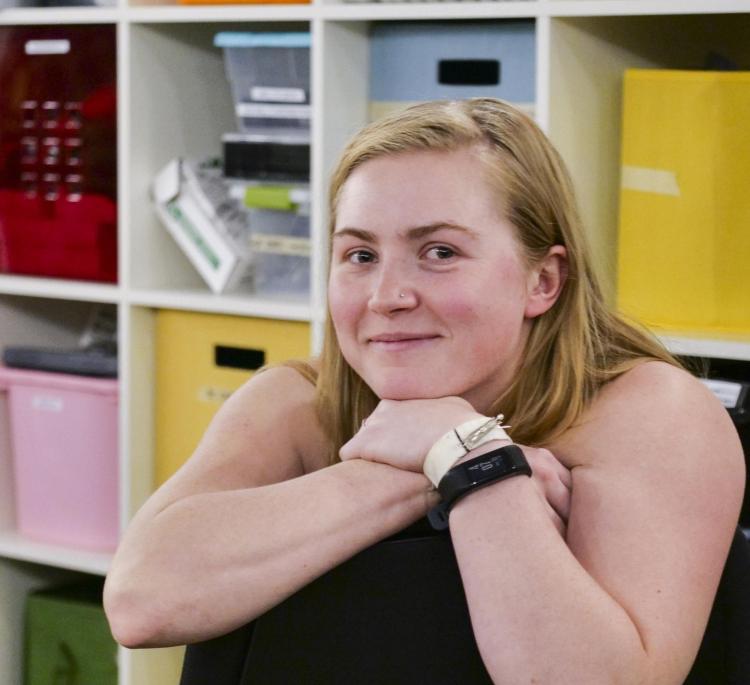BS CTD graduate blends passion for dance with technology, arts & media
Emily Daub began her CU Boulder career as a chemistry major, but she soon realized it wasn’t a good fit. She loved science and technology, but she was also passionate about dance and interested in design; she knew her strengths, but she didn’t know how she could pull them all together into one major.
But after joining the CU Boulder Fashion Design Student Association, Daub’s plans moved in a new direction when a member of the Maker’s Collective, a student club, asked the FDSA for help incorporating lights into dance clothing.
When Daub volunteered, she entered the orbit of the Makers’ Collective, which met in the ATLAS Institute's Blow Things Up (BTU) Lab. Fortuitously, that was the year that ATLAS launched its new interdisciplinary degree program which blends engineering skills with design and technology. When Daub heard about it, she realized this was the opportunity she was looking for.
It was a good choice: Later this month, Daub graduates with a Bachelor of Science in Technology, Art & Media (TAM), along with a minor in theater and dance.

“I love knowing how things work,” says Daub. “Dance allows me to explore my body as a machine; engineering lets me understand other things as machines.”
For that first wearable technology project, Daub worked on a swing dance skirt, inserting an accelerometer and 70 LEDs in the hem and coding them so the skirt lit up when the wearer spun. Since then, she’s created more than 20 pieces of wearable technology of varying levels of complexity, but “The Show” is by far her most ambitious project.
Masterminding both the art and engineering is a comfortable role for Daub, which strikes some as unusual. “I've almost always been an outlier,” Daub says. “TAM fosters that spirit, allowing it to become an asset rather than a handicap.”
“The Show” has kept Daub busy since January, designing and sewing costumes, embedding microprocessors, sensors and NeoPixel LEDs, and programming each with unique light patterns that respond to movement and the wearer’s proximity to other dancers over time.
In addition, she encoded a matrix of affinities between dancers, so that when characters with mutual attraction dance together, light patterns in their costumes reflected the personal chemistry and gradually converged. At the same time, analogous changes took place in the pairs' dance styles, Daub says.
Daub says she couldn’t have reached this point without support, including funding from an Undergraduate Research Opportunities Program (UROP) grant which covered all the materials for “The Show.” And working under the mentorship of Ben Shapiro as a member of the ATLAS research group, The Laboratory for Playful Computation, meant she was surrounded by a group of supportive graduate students. “Annie Kelly was so, so helpful,” says Daub, referring to a PhD student in the lab.
Daub says she feels lucky to have been able to combine her passions for dance and textiles with engineering, uniting her inner problem-solver and expressive artist. She says that the technical side of her work tends to draw the most attention, but she prefers that her artistry be seen in a more holistic sense. She choreographed “The Show,” performed alongside six other dancers, and she’s proud of the appearance of her costumes, even when the embedded technology is not apparent.
“When I have an idea that I want to realize, that’s the goal I’m focused on,” says Daub. “Soldering, designing, choreographing, coding—they are all related to each other, and they are all necessary.”


